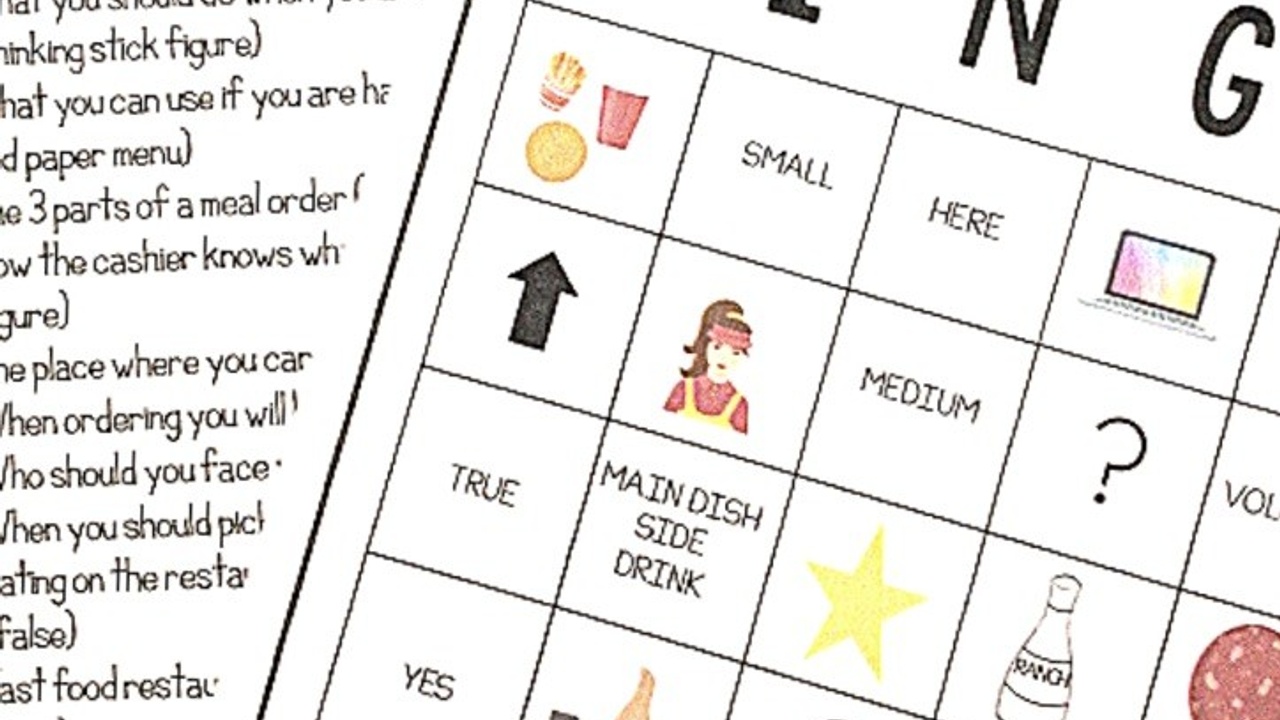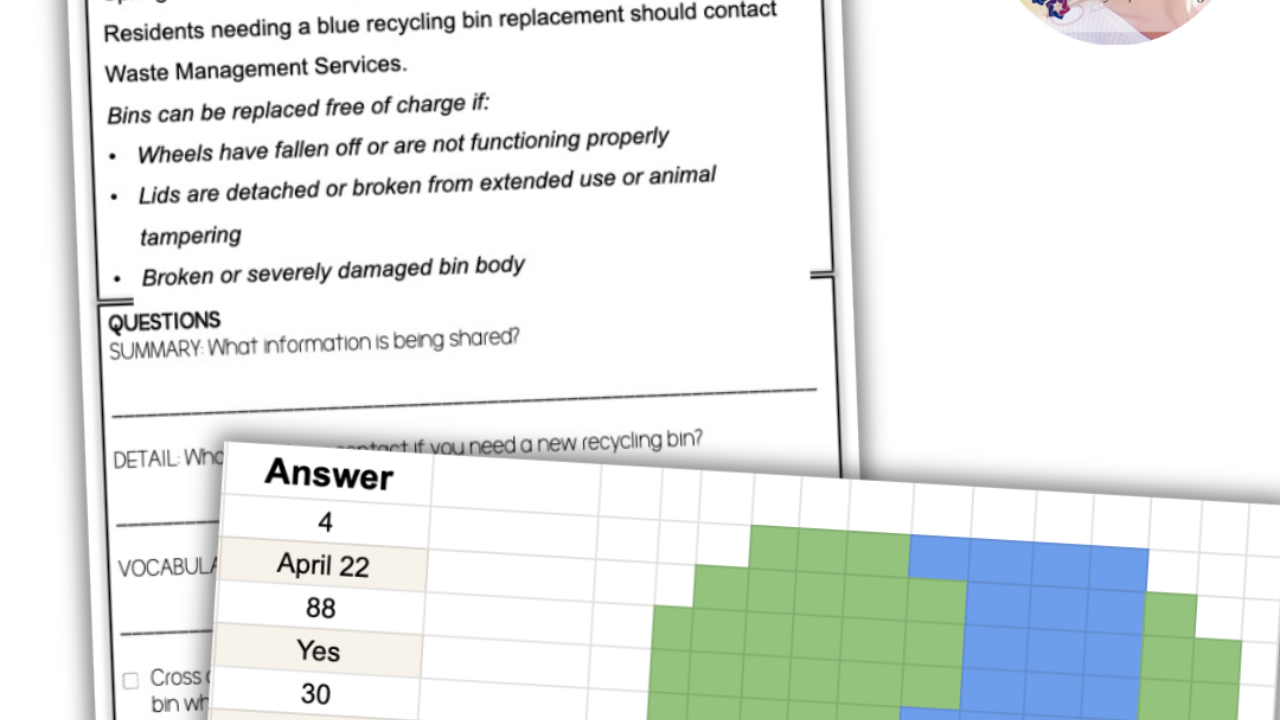Teaching Life Skills: Ordering Food [Special Education]
May 02, 2022
For some students, ordering food from a restaurant is basically a part of their everyday life, but for others, it's an important life skill they might use a handful of times a month. Regardless, food is a basic necessity and students are bound to access a restaurant (either by visiting the real thing or ordering online) periodically. Appropriately advocating to get needs met in any setting, but especially when it comes to getting the right food, is a lifelong skill (aka self-advocacy)!
Importance of Ordering Food at a Restaurant
No matter what kind of restaurant experience you are ordering food from( fast food, fast casual, or sit-down), your food order with a cashier or wait staff is a conversation. If your special education students struggle with bilateral conversations (ask a question, respond, ask a follow-up, respond, repeat), then ordering food may be a struggle for them. The conversation is routine for the cashier or waitstaff, but the order is so personal, so the conversation speed and reply timing when placing an order can cause lots of confusion and overwhelm!
Daily Living Skills Addressed
-What is a menu and where do you find it
-Common questions you will be asked by a cashier when ordering food
-Where to go to order and pick up food
-How to speak when ordering
-Visuals of different sizes
-How to communicate preferences
Why Focus On These Essential Skills
While going to eat at a restaurant usually equates to a great time, it can be a bummer when you get excited to go eat at a restaurant and the wrong food shows up in your bag or at your table. This can easily happen and helping students to navigate the conversation and speak up for what they want and don’t want can help reduce the times they are let down with the wrong order. Being able to read the menu (functional literacy) and share specific information with an unfamiliar person are key in-the-community skills.
When To Teach
The sooner students are engaging in real restaurant activities (from ordering, waiting, eating, and paying) the better, so if you can swing covering the basic skills of ordering before your first community trip to a restaurant- great! If not, be sure to cover as soon as you can so students can begin to flex their communication and advocacy muscle.
FREE Kitchen Safety Lesson Preview
I’ve created a complete lesson unit of materials for teaching this topic specifically for special education teachers who teach students with special needs. The materials are comprehensive (full lessons for 5 days) and appropriate life skill lessons for a variety of grade levels, including middle school, high school and transition level students. Below are some lesson unit highlights!
Students will Pick their order, including main, side, drink, toppings, sauces, and dressings.
Students will Say their order, including communicating effectively for the cashier to understand their wants/needs.
Students will answer questions related to their order by communicating their preference/choice
Potential IEP Goal Language
By (month, year), (student) will learn the steps to Pick their order (main, side, drink, toppings, sauces, dressings) with (#) or less prompts.
By (month, year), (student) will learn the steps to Say (verbally, written, or using AAC) their order by effectively communicate their needs and wants for the cashier to understand with (#) or less prompts.
By (month, year), (student) will learn the steps to Answer questions related to their order while making choices and communicating preferences with (#) or less prompts.
Lesson Vocabulary
For here, large, medium, menu, sides, size, small, to-go, toppings, value meal
- Pre and Post-test of basic knowledge
- 1-Page narrative explaining the skill with and without visual text supports (to incorporate functional reading)
-
5 skill practice activities to learn and/or reinforce the focus skills (hands-on activities)
-
Game for students to practice their skills (because learning is fun)
-
Boom Cards (task cards) for practice or assessment (which can also be accessed in a traditional print version)
-
Student survey/learning reflection worksheet (thumbs up or down)
-
Encouraging on-topic quotes (use as a classroom poster or starter for each class period)
-
5 strategies for success (tips for being successful with the focus skills)
-
Coloring page with on-topic graphics
-
Skill mastery certificate
-
Data collection sheet on specific focus skills
-
Homework sheet to encourage students to practice the skill outside of the school setting
-
Word search of key vocabulary terms
-
Visual supports for focus skills with age-appropriate colors and graphics
This lesson unit resource is great as a stand-alone unit, but is part of a larger restaurant life skills lesson bundle which is a great way to cover all restaurant skills in one comprehensive unit. From ordering at a fast food restaurant to sit-down restaurants, this lesson unit will provide materials for direct instruction of this important skill. To review other important restaurant skills, such as choosing an order based on food item cost (menu math), basic math skills to find total cost to pay for a purchase with a debit card at their favorite restaurant (budgeting), manners at different types of restaurants, sit-down restaurant experience, and paying with cash or debit card (including tip), the Restaurant Functional Skills Bundle is the most comprehensive resource (with enough materials to span 5-6 WEEKS).
If school funds are tight and meals need to be prepped at school, check out this FREE grocery store scavenger hunt download and FREE kitchen safety lesson unit preview.
Ultimate Goal
Advocate and answer in any real-life setting is the ultimate goal. Once a student decides what they want to eat (and they may know what they want if it's a restaurant they visit frequently), only then can they advocate and answer. However, if (or when) the wrong food is served, they must advocate that their order is wrong and retrace their steps with the cashier. This could look like starting the order again from the top, confirming the cashier or waiter/waitress records the correct item in their notes or register, or answering follow-up questions about their preferences. For most, food is a motivator, and getting the wrong food might be an even bigger motivator to advocate!
- Order Food at a Restaurant Lesson Unit
- Restaurant Meal Budget Lesson Unit
- Restaurant Manners Lesson Unit
- Sit Down Restaurant and Tip Lesson Unit
- Going to a Restaurant Lesson Unit Bundle
- Life Skills Curriculum Bundle




















